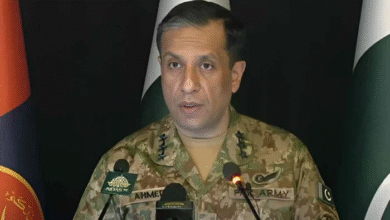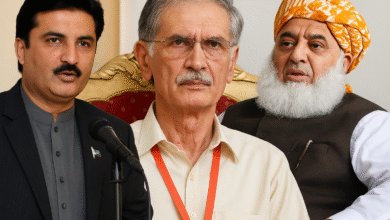Monsoon Devastation: KP’s Governance on Trial

By Ghulam Haider Shaikh
The monsoon season in Khyber Pakhtunkhwa has once again turned into a season of fear, loss, and devastation. Over the past week, torrential rains and flash floods have claimed more than 70 lives, left hundreds injured, and displaced thousands. This recurring tragedy underscores a harsh reality: KP’s governance systems remain woefully unprepared to meet the challenges of a rapidly changing climate.
Chief Minister Ali Amin Gandapur’s administration has taken visible steps in deploying rescue teams and using drones to deliver emergency supplies. While such measures are commendable, they remain short-term solutions to a much deeper problem. The province cannot afford to treat each year’s monsoon as an isolated disaster; it must recognize this pattern as a structural governance and policy failure.
The underlying issues are well known. Urban areas suffer from clogged drainage systems and unchecked construction on natural waterways. Rural communities face eroded riverbanks, deforested hillsides, and lack of early-warning mechanisms. These factors combine to amplify the destructive power of heavy rains. Addressing them requires a long-term, multi-pronged approach.
First, empowering local governments is crucial. Municipal bodies and village councils are the first responders during disasters, yet they often lack adequate funds, trained personnel, and decision-making authority. Allocating resources directly to these institutions can ensure faster, more context-specific responses.
Second, climate-resilient infrastructure must be prioritized. Flood-prone areas need stronger embankments, reinforced bridges, and raised roadways designed to withstand extreme weather. Building codes should be updated to enforce flood-resistant housing, especially in vulnerable districts like Swat and Charsadda.
Third, environmental restoration is no longer optional. Massive reforestation programs and wetland protection can act as natural buffers against flash floods. The government should incentivize community participation in these initiatives, making them both economically and ecologically sustainable.
Coordination between provincial and federal agencies also demands attention. Past disasters have revealed gaps in communication and overlapping mandates between PDMA, NDMA, and Rescue 1122. A unified disaster command center with real-time data sharing and clear chains of command could dramatically improve response efficiency.
Transparency and accountability remain non-negotiable. Relief funds and reconstruction contracts must be monitored through independent audits to prevent mismanagement and corruption. Public trust, once lost, is hard to regain—especially when citizens are forced to rebuild their lives year after year.
KP is standing at a crossroads. It can continue with piecemeal responses that leave it perpetually vulnerable, or it can invest in a comprehensive disaster resilience strategy. The choice will define the province’s future. Monsoons will return every year; their devastation does not have to.





